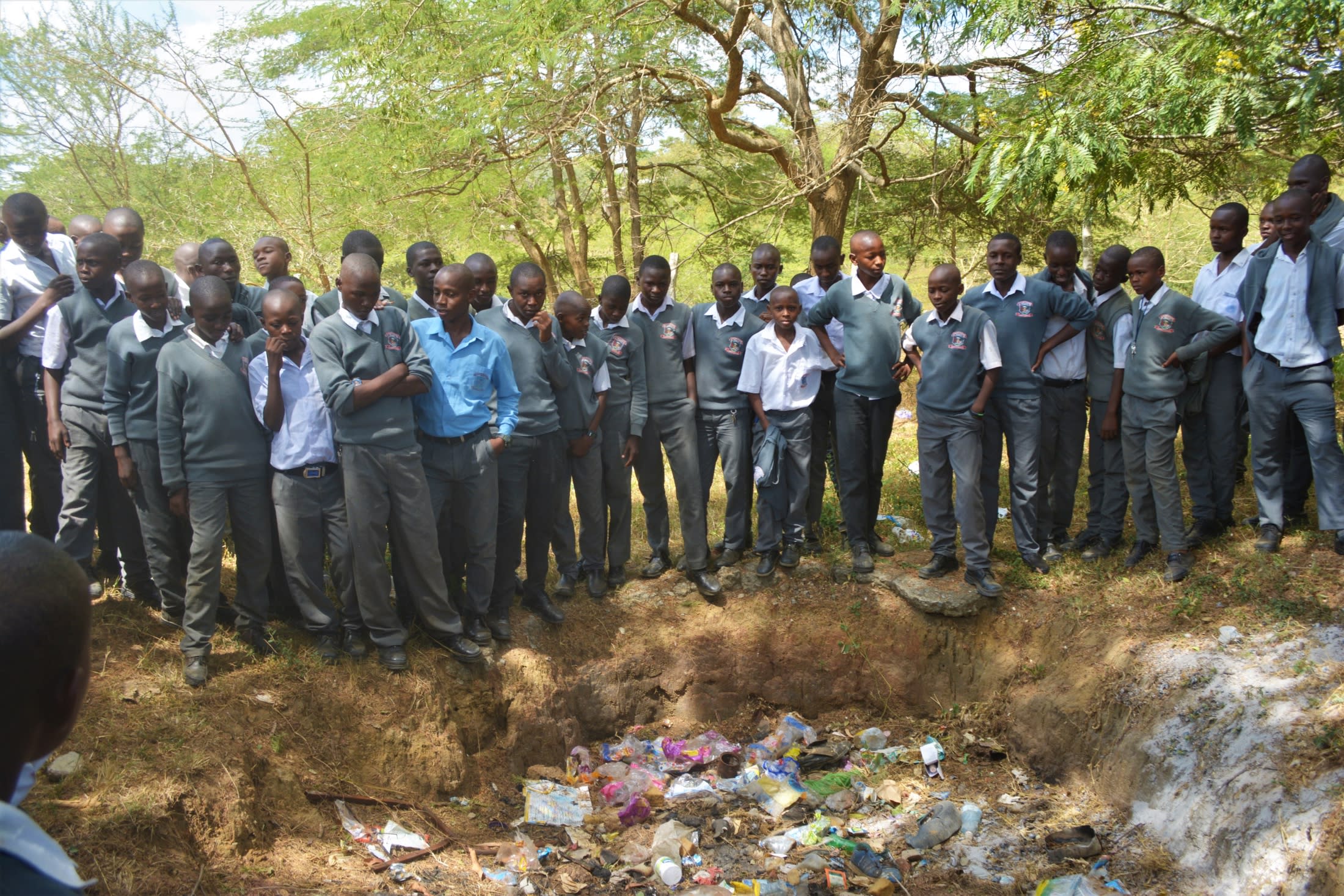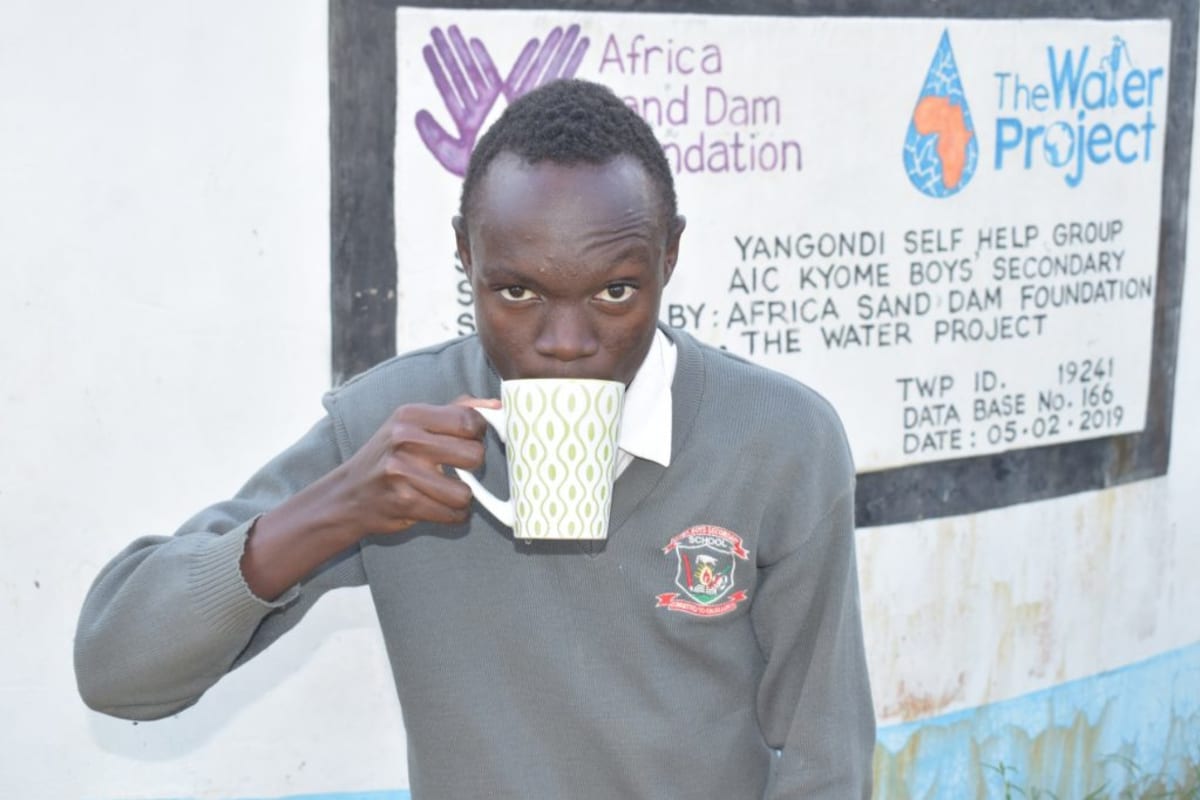Water collected in AIC Kyome Boys' Secondary School's tanks last for just 3 weeks out of the year for the 345 students that attend. Once the water storage runs out, the school purchases water from delivery companies, which is often very costly for the school.
The water tanks that harvest the rainwater usually run out very fast due to the large school population. The rock water catchment, on the other hand, is leaking.
"Mostly, we go for about a week without bathing. Sometimes all one can think about is water during class time because of the thirst felt," said Robert Kimanzi, a 14-year-old student at the school.
The school is left to purchase water from delivery companies that is not safe for direct consumption because it is often water collected from open sources. It is also a financial strain for the school to purchase water on a daily basis. At times, these deliveries are delayed and force the school to go multiple days without water.
The sanitation conditions are very poor all because of the water problem. The school latrines are rarely cleaned and there is no water kept nearby.
"The current state of hygiene and sanitation is very low; below average due to low supply of water in the school," said Headteacher David Mwikya.
"Hygiene and sanitation is a problem here. Lack of water is a huge setback for the school."
Kyome Boys' Secondary School was established in 1966 by the Africa Inland Church and was later absorbed by the government in 2001 and declared a public school. It has grown over time. The school has the aim of expanding, but the water challenges inhibit their progress.
The school is based in rural Kyome Village. The area is fairly vegetated with trees sparsely planted in the school. The buildings are well-maintained and painted in blue and white. The classes and dormitories have concrete floors, windows, and doors which are also well-kept.
Here’s what we’re going to do about it:
Training
Students and staff will be trained for one day. Those in attendance will form a school health club that will promote good hygiene and sanitation practices both at school and home. They will learn all of the steps to proper handwashing, how to treat water, and how to keep their environment clean. The school will also be taught how to best oversee and maintain their new rainwater catchment tank and handwashing stations.
Handwashing Stations
Three handwashing stations will be delivered at the project’s completion. These are 1,000-liter plastic tanks fitted with four taps. The health club and school management will be responsible for making sure tanks are filled with water and that a cleaning agent such as soap or ash is available.
Rainwater Catchment Tank
We will build a 104,000-liter rainwater catchment tank for this school. This water will benefit the students, teachers, and supplementary staff. Parents will mobilize the materials needed for construction, such as sand and stone. They will also lend some strong arms to help with the actual construction.
The huge capacity of this tank makes the others look tiny in comparison; 104,000 liters should be enough water storage to alleviate the strains felt during the dry months. As soon as the tank has time to cure, it can begin to collect rainwater for drinking, cooking, and cleaning!

 Rainwater Catchment
Rainwater Catchment
 Rehabilitation Project
Rehabilitation Project

































